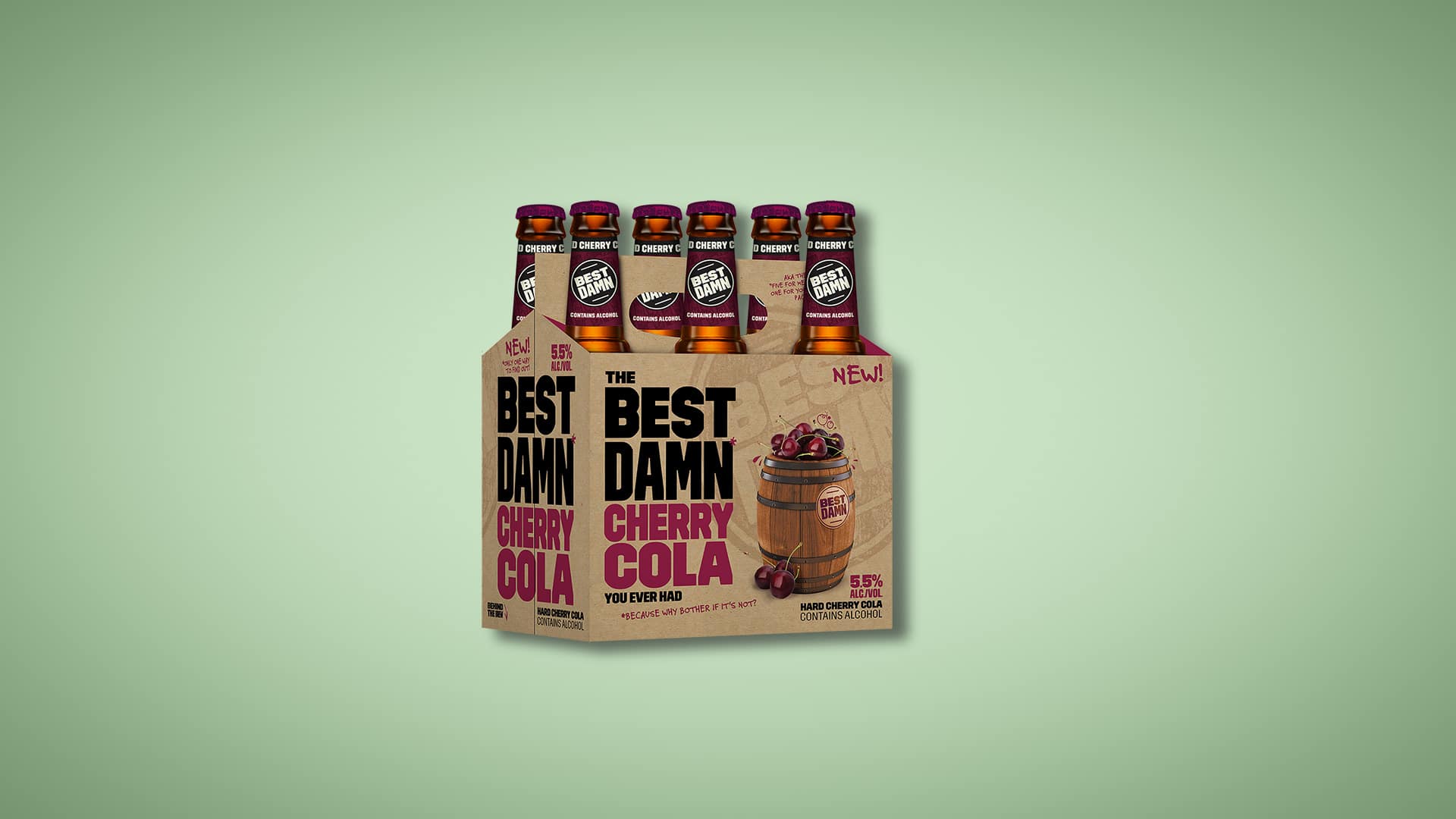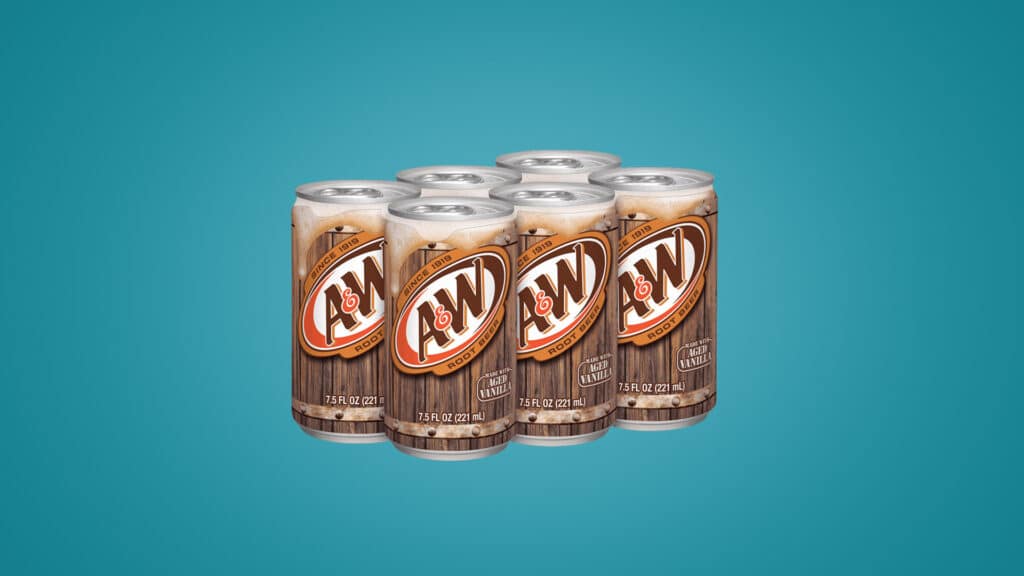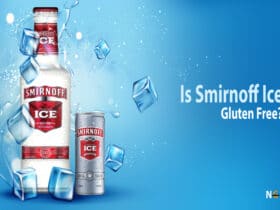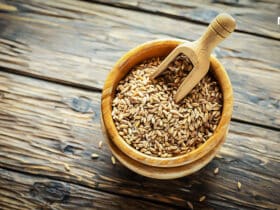Who doesn’t love to have a sip of Best Damn root beer with their friends? It is known for its iconic full-bodied fizz and a real twist of vanilla beans. But if you have gluten intolerance, you are probably wondering, “Is Best Damn root beer gluten free?”.
The Best Damn root beer is not gluten free. It uses barley as the base ingredient. Barley is high in gluten; so does this root beer. Besides, we are not sure if it is brewed in a gluten-free facility. So, you better not consume it if you have celiac disease.
However, this is not all you need to know if you are health-conscious. Does it contain sugar or other unhealthy ingredients? Today we’re going to discuss all the good and bad aspects of this root beer. So, read on!
Table of Contents
Is Best Damn Root Beer Gluten Free?
Like most modern manufacturers, Best Damn Root Beer doesn’t follow the traditional recipe anymore. It does not contain the bark and root of the indigenous North American tree, sassafras or its alternative, sarsaparilla vine, to mimic the taste of the traditional root beer.

The Best Damn Root beer uses barley malt as the base ingredient to give it a crisp taste. And it also uses flavoring agents to ensure that the iconic taste and texture of traditional root beer are maintained. Sadly, due to its use of barley, which is one of the key sources of gluten, it is not at all gluten free.
Besides, the company that brews this root beer has never disclosed if it makes the beverage in an entirely gluten-free facility, leaving a chance of cross-contamination. So, people having celiac diseases or gluten allergies shouldn’t consume it.
Related Posts:- Is Corona Beer Gluten Free?
Best Damn Root Beer History And Origin
Best Damn Root Beer comes from the house of the world-famous brewing house, Anheuser-Busch. With more than 160 years of experience in alcoholic beverage production, AB now has 23 agricultural facilities in the USA alone, where it produces the ingredients needed for its beverages. Besides, it has made a $16 billion worth of capital investment to maintain the highest quality standard.
It only grows and sources the finest ingredients from its own agricultural facilities to maintain the quality standards and crisp taste that it is known for. Besides, the US arm of Anheuser-Busch now has 16 local breweries, along with 17 nationwide distributorships to maintain a smooth supply chain. And Best Damn is the first hard root beer from the house of AB.
Anheuser-Busch is one of the most technologically advanced breweries in the world right now. Besides, it has the largest brewery in St. Louis, a state-of-the-art facility where it now produces the Best Damn root beer. And not just the finest ingredients, it also lets the world-class brewmasters maintain a distinct taste and crispness in its line of hard root beers.
What Is Root Beer?

You have wondered, “Is Best Damn root beer gluten free?” And now you have the answer. It’s time to have a clear idea about what root beer actually is. It is a sweet fizzy soft drink that is traditionally made in North America. The root bark of the sassafras plant (Sassafras albidum) used in root beer gives it its distinct taste, flavor, and crispness.
Many traditional and modern brewmasters also use the vine of sarsaparilla (Smilax ornata) as the primary flavoring agent of root beer. And this plant is also used to make other North American soft drinks. The use of sassafras or sarsaparilla also gives root beer a thick and foamy texture. However, many breweries also use vanilla beans to give it a flavor twist.
The US Food and Drug Administration banned a key component called safrole found in the root bark of the sassafras plant in 1960, mainly due to its carcinogenic impact. After that, most brewers started to use synthetic agents that mimic the taste and characteristics of sassafras. More recently, several breweries successfully extracted the sassafras essence without safrole.
Root Beer Nutritional Facts
The indigenous people of North America started making root beer for medical and recreational purposes even before the arrival of European settlers. Since then, the bark and roots of the sassafras plant have been used in root beer to ensure a long-lasting foam due to its mucilaginous properties. And the nutritional facts of root beer are as follows.
| Items | Amount Per Serving | %Daily Value |
| Carbohydrate | 44 Grams | 16% |
| Sugar | 44 Grams | 89% |
| Protein | 0 Gram | 0% |
| Fat | 0 Gram | 0% |
| Sodium | 65 Grams | 3% |
| Cholesterol | 0 Gram | 0% |
| Caffeine | 22 Milligrams | 5.5% |
There is no significant trace of trans fat, saturated fat, dietary fiber, iron, potassium, and calcium in traditional root beer. And the %DV of caffeine is calculated while considering 400 mg of caffeine intake as the safe threshold.
Root Beer vs. Beer
Both root beer and traditional beer are made with the same process where the brewers first boil a mix of grains and various plants and then add yeast to start the fermenting process. However, the real difference between these two types of beer lies in the base ingredients and flavoring agents.
Regular beers are made with grains (barley, wheat, rye, or other grains), and it uses hops as the key flavoring agent to give them a distinct taste. But the traditional root beers are made primarily with the bark and roots of the indigenous sassafras plant or sarsaparilla vine. Besides, many traditional breweries are known to use spices and flowers to give it an aromatic twist.
However, the traditional brewing process is often not followed in the modern industrially manufactured root beers. And most breweries now use malts as the base ingredients and then add the artificial flavoring agents of sassafras, sarsaparilla, or wintergreen to give it the characteristics of a traditional root beer.
You’ll also find root beer varieties where the ingredients are not allowed to ferment. Hence, they are practically alcohol-free. This type of root beer can be enjoyed by kids, too, as a cold beverage or in the form of floats. If you’re an adult, though, you can always choose a “hard” root beer – as long as it fits your dietary needs.
Is Root Beer Gluten Free?

Like most sodas, traditional root beer is naturally gluten-free, as it doesn’t use wheat, malt, or barley in the traditional brewing process. Instead, it uses the root and bark of the sassafras tree and the vine of sarsaparilla as the base ingredients that don’t have any gluten content.
However, the modern industrial-scale brewing process doesn’t follow the traditional ways to manufacture root beer in bulk quantities in a shorter time frame. Many breweries now use malts and other grains as the base ingredients to mimic the frothy texture.
So, to be extra sure, you need to check the ingredient label of the individual root beer to know if it has any hidden gluten-rich ingredients in it. You should also be careful about the possibility of cross-contamination in the manufacturing, processing, and storage units.
Most root beers nowadays also have HFCS (high-fructose corn syrup), which is exceptionally high in sugar. So, even if the root beer is entirely gluten free, you shouldn’t consume too much of it, as consuming that much sugar can lead to lethal diseases, such as diabetes.
Is Beer Gluten Free?

Beer is the third most popular drink in the world, only after water and tea. And for thousands of years, it has remained the most popular alcoholic beverage globally. Traditionally, beer is made with barley, hops, yeast, and water, while some manufacturers also use other grains like wheat and rye.
Barley and wheat both are high in gluten, which makes the beer a gluten-rich beverage. However, many breweries now extract the gluten content from their beers or use non-gluten grains to reduce the gluten amount to less than 20 ppm (which is the threshold value). The gluten content in traditional beers are as follows.
| Type of Beer | Gluten Content |
| Lager | 63 ppm |
| Stout | 361 ppm |
| Ales | 3,120 ppm |
| Wheat Beer | 25,920 ppm |
So, anyone who is seriously allergic to gluten or has celiac disease should not consume beer. Consuming it even in a small quantity can cause diarrhea, stomach ache, and improper absorption of vital nutrients in people allergic to gluten.
Gluten Free Root Beer Brands
Even while most breweries now use barley, malt, or even wheat as the base ingredients in root beer, there are five officially certified gluten-free root beer brands that are safe for celiac people.

A&W Root Beer: Available in two variants, traditional and zero sugar; this brand has just 160 calories in a single serving. Besides, a can (12 oz.) of this root beer has 47 grams of carbohydrates and no trace of fats at all.
Barq’s Root Beer: Besides the traditional variant, Barq’s has also recently launched its diet root beer. A single can of this root beer has 160 calories with 45 grams of carbohydrates.
Bundaberg Root Beer: A can (375 ml) of traditional Bundaberg root beer has 190 calories. A single serving has 47 grams of carbohydrates without any trace of fat or protein.
Jones Soda: Available in pure cane soda flavor; this root beer has 180 calories in a single serving. A bottle (355 ml) of this beer has 44 grams of carbohydrate without any trace of protein or fat.
Mug Root Beer: Besides the traditional variants, it recently launched the cream root beer that has a creamy texture and taste. A single can (12 oz.) of this beer has 160 calories with 43 grams of carbohydrate in it.
Gluten Free Root Beer Float Recipe

You can easily find root beer brands that are officially certified as gluten free and suit your taste. And with those gluten-free root beers, you can make the root beer vanilla float in your home.
Ingredients
- Vanilla ice cream: 2 scoops
- Root beer (gluten free): 8 oz
- Whipped cream: For garnishing
- Maraschino cherry: For garnishing
Procedure
- Chill a tall glass to prevent the rapid melting of ice cream.
- Place the chilled glass at an angle and slowly pour the root beer to prevent over-frothing.
- Add vanilla ice cream on top with a small scoop.
- Add whipped cream according to your taste and garnish it with Maraschino cherry.
- Stir a little and serve chilled.
Note: A single serving of this root beer vanilla float has 48 kcals. Besides, it has 12 grams of carbohydrate, 1 gram of protein, 1 gram of saturated fat, 6 mg of calcium, and 15 mg of sodium.
Final Words
Root beers are great as they come with a distinct taste, and it is also low in alcoholic content (traditionally 5% v/v). Besides, North American people have been consuming this beverage for ages. And Best Damn root beer is also among the very best as it has a long-lasting foaming texture with an iconic taste.
However, is Best Damn root beer gluten free and safe for everyone? Unfortunately, it is not. This beer uses barley malt as the base ingredient, which is high in gluten. So, people allergic to gluten shouldn’t consume it, even in a small proportion.











Leave a Reply
View Comments